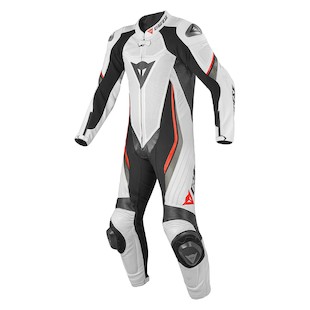Two months ago, we posted an article about the benefits and ease of getting your motorcycle jacket or race suit tailored. That leather is the one thing standing between the asphalt and our soft skin, which makes both the fit and quality of the leather incredibly important.

To get a little help with the matter, I went back to John Tutujian, head leather expert at Anthony’s Leather Works in Corona Del Mar, Calif., to get the ins and outs of leather care.
ZLA: What is the number one problem with jackets and race suits that come in and what’s the fix?

ZLA: I’ve noticed that the color seems to fade in a lot of my jackets. How do I prevent that?

When looking at conditioners, it’s best to look for something that will evaporate. This is one of the reasons why we decided to start making our own. Think of it like coating a scrape in Neosporin and never letting it dry out and actually heal. The leather has to breathe. I’m also a big fan of our product because it doesn’t clog the holes in perforated leather, but I’m sure your readers can find others to do the same. Application is simple. Just use a sponge and apply a thin coat.
Leather conditioning is the most important way to maintain your gear, though it won’t do much good if your sweat disintegrates the stitching. Conditioning keeps the leather flexible, which is where it gets its strength. Regular conditioning will keep the colors from fading, too. Also, if you have a jacket with both leather and vinyl pieces, or you just want to clean vinyl pieces on your bike or something, I recommend Tannery Leather and Vinyl.
ZLA: How often would you recommend using leather conditioner?

ZLA: You mention high quality leather. What's the difference?
JT: We can really tell the difference when working with leathers of different qualities. It makes a huge difference in the alteration process because it affects how pliable the leather is, but we also see the difference in terms of how long the leather lasts and we see the effects of leather maintenance, as well. Companies like Alpinestars, Dainese, REV’IT, and Kushitani use the nicest leather, which is taken from better cattle and from the sides of the animal, instead of the belly. When it comes to brands like Joe Rocket or Speed and Strength, you can tell the leather just isn’t as easy to work with and won’t stand the same tests of time.

JT: Yes! A lot of people like to use wax in the zippers, but all that does is gunk them up worse. Use liquid silicon in the zippers if you want to grease them up a little bit, and they should stay in good shape.
It’s crazy how many people get this wrong.































 Riders Preferred Membership
Riders Preferred Membership




